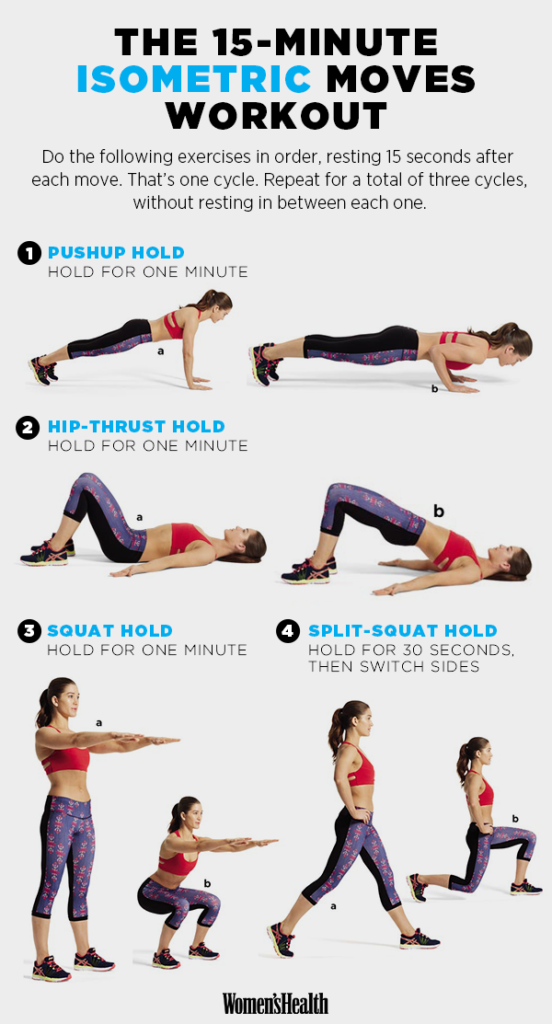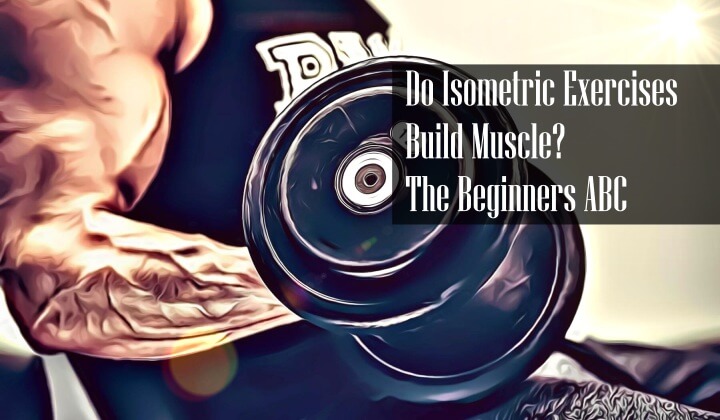Do isometric exercises build muscle?
Well:
Isometric exercises are rarely included in the glamorous types of working out, such as pushing enormous amounts of weight and doing impressive calisthenics combos.
However, they are a risk-free type of exercise that can help you build strength, muscle size, and endurance in equal measure.
But how effective are they?
So here’s how everything comes together:
Contents
What is Isometric Exercise? Science and Benefits
An isometric exercise is a training technique in which your joints and muscles do not move; instead, they contract in a static position.
Isometric exercises, also known as isometrics, are among the oldest in written history, usually acquiring a spiritual value in yoga and eastern martial arts, -especially Tai Chi.
Did you know that Bruce Lee himself used isometrics to build his muscular control and endurance which made him world famous?
Isometrics are a great choice if you’re suffering from bone fractures or joint pain without sacrificing effectiveness, although you should pay attention to your blood pressure if you have some kind of cardiovascular disease, like hypertension.
Proper breathing is vital, as holding your breath while doing isometrics will increase your blood pressure to dangerous levels.
Here are some of the benefits of isometric exercises:
- Strength and muscle gain without as much wear and tear on the joints
- Increased lactic acid tolerance
- Deepening of the mind-muscle connection
- Increased body control
- Time-efficient workouts
Back in the 1950s, researchers Hettinger and Muller found a single daily effort of 2/3rds of a person’s maximum effort exerted for six seconds at a time for ten weeks increased strength about 5% per week, while Clark and associates demonstrated static strength continued to grow even after the conclusion of a five-week program of isometric exercises.
The principle of isometric exercise is simple: hold a weight or a position you’re comfortable with for a fixed period. Gradually increase the resistance or the time held under tension, and your strength and endurance will grow accordingly.
The intense isometric contraction in your muscles is the key here!
If you feel like some of your muscle groups are lagging behind the rest of your body, isometrics may be the factor that will help you push through your biceps or calf plateaus.
Gymnasts and ballet dancers know their stuff, and you can bet that there’s no better way to build up your calves than to stand on the balls of your toes for hours on end!
One thing you should keep in mind is to mix up the angles in which you exert your muscles in isometric exercising because strength gained at, say, the upper portion of a squat movement will not carry over to the lower part.
Isometric exercises can be added to your regular workout or done as 10-15 minute sessions, independent of your normal workouts.
But:
Bear in mind that isometrics are still taxing to both your muscles and nervous system, so take care to rest and eat properly afterward!
How to Use Isometric Exercise in Your Daily Workout
So here’s how you can incorporate isometrics into your workouts:
Chances are, you don’t have the time or patience to develop your muscles through slow and very long isometric exercises. Therefore, you can perform very short and very intense isometric sets instead.
Rest 2 minutes between sets and do 5 sets per exercise. If you want to focus on a specific muscle group and make it pop, put the isometrics at the beginning of your training routine in order to pre-exhaust the targeted muscles.
4 Effective and Simple Isometric Exercises to Use at Home
You can get fantastic results from doing isometric calisthenics – check out my MASSIVE guide to at home bodyweight exercises for loads of inspiration.
Here are four of my favorites:
Wall Sit
The wall sit is an exercise that will do wonders for the strength and endurance of your quads, hamstrings, and glutes.
Stand upright with your back against a wall. Now raise your hands straight in front of you or cross them on your chest (Wakanda Forever) and squat down until your thighs are parallel to the ground.
Keep your chest up and core tight, and don’t lean forward. Pay attention to your knees; ensure they don’t pass your toes. Hold this posture until close to failure, aiming for at least 30 seconds, rest and repeat for 5 sets.
Puh!
Pushup Hold
Assume the pushup position and try to hold as you would a standard plank, squeezing your glutes and core.
Do the same with the middle portion of the pushup and, if your shoulder flexibility allows it, with the lower part.
Aim for shorter but intense holds of 10 seconds per portion for 5 sets.
Pullup Holds
The dead hang and the flexed-arm hang will be your bread and butter for back isometric exercises.
Grab the bar with a wider than shoulder grip, keep your arms almost straight (don’t lock out your elbows), pull your shoulder blades down and back and hold on for a comfortable amount of time, -aiming for at least 15 seconds.
You want to keep some grip endurance in the tank for the flex-arm hangs, too, so don’t exhaust yourself too fast!
For the flexed-arm hang, do a regular pull-up or climb on a chair and firmly grip the bar with your chin at or above the bar’s height. Aim for 10 to 15 seconds and then slowly lower yourself down.
You can mix these two exercises up, but after 3 to 5 sets of each, you probably won’t have much energy for anything else, so do them in a separate day.
Planks
The beloved plank… Loved by many (including me), while hated by others (the ones that don’t know better).
To perform a plank, get in a pushup position and transition to holding your weight with your elbows; only your elbows and toes should be in touch with the floor.
Flex your core and glutes, keep your body as straight as possible and do 5 sets to failure until you can hold it for over 2 minutes, where you can switch to more challenging variations.
Remember to stop before your torso starts to sag towards the floor. When your posture starts to fail, you risk getting injured if you keep holding the position.
If you are too cool to do a regular plank, there are tons of challenging plank variations waiting for you.
15 Minute Isometric Moves Workout

Source: womenshealthmag.com
Final Words: Do Isometric Exercises Build Muscle?
These are just some very fundamental isometric exercises; when it comes to isometrics, the sky is the limit!
As long as you can comfortably hold that position, you can exercise in it.
For example, staying on your toes is an isometric exercise for your calves. Holding a T-position, arms held straight out at your sides, is an isometric exercise for your deltoids, mainly the middle head that makes you look wider.
If you like the principles and idea of isometric exercising, make sure to integrate it into your daily life and it sure WILL bring results.
Because isometric exercises really work!
Do you need even more inspiration? No problem! Go check out my MASSIVE guide to at home strength training, -everything you need to know about building strength at home!



2 thoughts on “Do Isometric Exercises Build Muscle? The Beginners ABC”
Comments are closed.